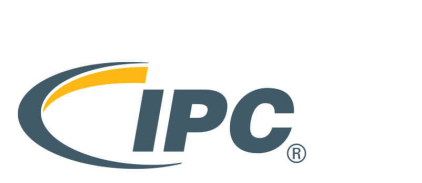
The purpose of IPC is to serve the printed board and electronic assembly industry for its users and suppliers. IPC's activities mainly include market research and statistics, standards and norms, technical seminars, workshops, qualification training and certification, printed circuit exhibitions, etc. Among them, the development of standard specifications for the manufacture and assembly of printed circuit boards is particularly prominent.
A detailed instruction manual for printed circuit board acceptance conditions. This standard describes the ideal, acceptable and rejected conditions that can be observed from the outside or inside of a printed board through four-color pictures and illustrations, ensuring that manufacturers, quality inspectors and engineers have the most cutting-edge industry information.
This specification establishes general requirements and responsibilities for suppliers and users. This specification serves as the basis for the IPC-6010 printed board performance series of specifications, describing the assurance requirements for quality and reliability that must be met.
This specification covers the qualification and performance of rigid printed boards, including single-sided and double-sided with or without plated through holes, and multi-layer boards with or without blind and buried holes and metal core boards. The specification addresses final product and surface plating requirements, conductors, through-holes, frequency and quality consistency of acceptance testing, electrical and mechanical and environmental requirements.
This specification covers the qualification and performance requirements of flexible printed boards designed in accordance with IPC-2221 and IPC-2223. Flexible printed boards may be single-sided, double-sided, multi-layer or rigid-flex multi-layer. All of these printed board configurations are available with or without stiffeners, plated through holes and blind/buried holes.
This specification provides detailed performance standard information for high-frequency printed boards. It supersedes IPC-HF-318A and was developed as a revision of this document. The information in this document is also intended to supplement the general requirements identified in IPC-6011.
It includes industry-recognized testing techniques and procedures for various types of printed circuit boards and connectors, including chemical, mechanical, electrical and environmental testing.
Based on appropriate test methods and conditions, establish requirements for evaluating solder mask materials and determine their acceptability requirements on standard printed boards.
This specification specifies requirements for electrical and electronic circuits on rigid or multi-layer printed boards to use the substrates—laminates and prepregs.
This specification establishes the classification system, qualification and quality compliance requirements for flexible substrate dielectric materials used in flexible printed circuits and flexible flat cables.
This standard specifies the requirements for the classification system, qualification inspection and quality conformity inspection of flexible metal-clad insulation for flexible printed circuits and flexible flat cables.
This specification specifies the requirements for the surface finishing methods of printed circuit boards using immersion nickel gold. This specification determines the requirements for the thickness of immersion nickel & immersion gold based on performance standards. It is suitable for suppliers, printed circuit manufacturers, and electronic manufacturing service providers and original equipment manufacturers.
This specification specifies requirements for the use of immersion silver as a surface finish for printed boards. This specification is intended to define immersion silver thickness requirements based on performance criteria. This specification applies to chemical solution suppliers, decking manufacturers, electronic manufacturing services (EMS) and original equipment manufacturers (OEM).
This specification specifies requirements for the use of immersion tin as a surface finish for printed boards.
This document is intended to assist in the selection of test analyzers, test parameters, test data and fixtures for electrical testing on unassembled printed boards. The purpose is to verify that the guide plate on the printed board is set up to meet the design requirements.
This standard specifies test methods, defect definitions and illustrations for solder-ability evaluation of printed board surface conductors, pads and plated-through holes. This standard applies to both supply and demand sides of printed boards.
The purpose is that the parts to be soldered on the board should not adversely affect the solder-ability during the printed board manufacturing process and subsequent storage. The solder-ability is based on the evaluation of a representative part of the board surface by using samples that are processed at the same time as the board surface. This slice can also be individually cut from the processing board when each subsequently selected sample is carried out.
By continuing to use the site you agree to our privacy policy Terms and Conditions.
Recruit global agents and distributors Join us